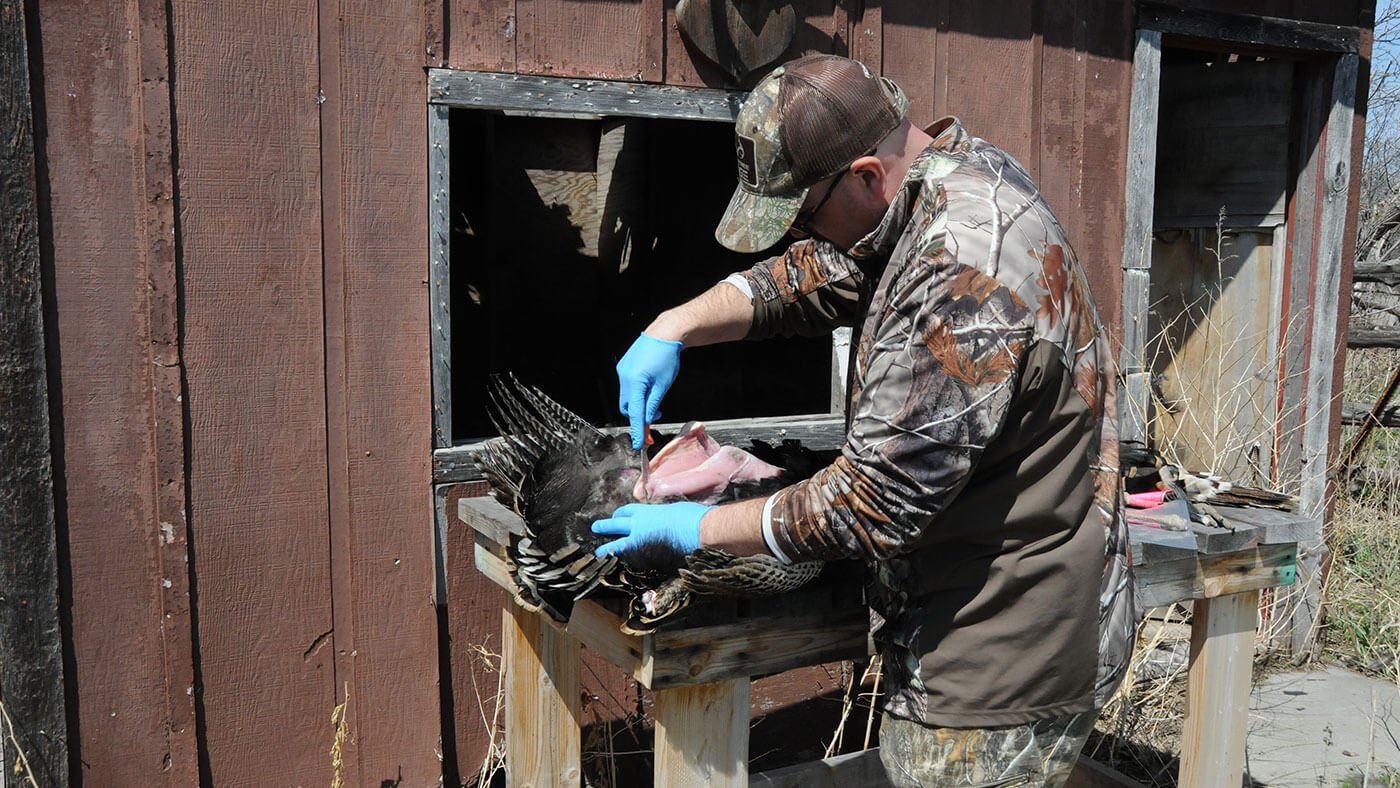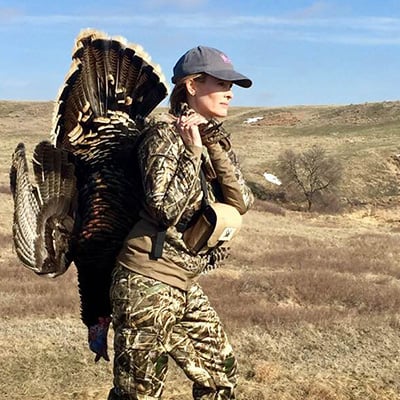- Savage Blog
- Tips for Cleaning Wild Game Every Hunter Should Know
Tips for Cleaning Wild Game Every Hunter Should Know

You’ve put a lot of time and work into prepping for your hunt, and it paid off with a successful kill. What a shame it would be if you didn’t get the most out of your wild game meat because of poor field care or faulty tools. Cleaning wild game is a skill that every hunter should know.
Even if you’ve cleaned many a critter, there’s always room for improvement. Will Brantley, Realtree.com editor and hunting guide, and Michael Pendley, author of Realtree’s Timber 2 Table wild game recipe blog, have a combined 70 years of hunting experience for game animals big and small. Both do most of their own processing, too. Here are some of their tips for cleaning wild game quickly and efficiently, everything from squirrels to turkeys to moose.
Bring the Right Gear
The No.1 tool you need for cleaning wild game animals is a good, sharp knife, which is needed for every phase of the process. A dull knife can be dangerous since it requires more force to make a cut.
“A tiny, sharp knife is better than a big, dull one,” Brantley says. “I've taken moose apart in the field with a Havalon folding knife and scalpel blades.”

When cleaning small game, like rabbits and squirrels, Pendley says he prefers a sharp knife with a 3- to 4-inch blade, which he says is easier to control. In addition, Pendley and Brantley both use game shears extensively when cleaning small game, as they’re handy for snipping away heads, feet, and wings.
For larger game, Pendley prefers to have a couple different types of knives on hand. “First, I like a larger, heavier blade in the 5- to 6-inch range for separating and breaking down primals, then a finer-bladed boning knife for finishing out individual cuts, removing silver skin, etc.,” he says. “Keep a sharpening steel nearby and use it often to maintain the edge on your knives. A knife edge is very thin and constant use tends to roll it to the side, making the knife seem dull. A few strokes on the steel realigns the edge, making the knife sharp again.” He says a meat saw comes in handy for cutting through bone like legs, ribs, and spine.
Besides your cutlery, consider wearing a pair of plastic disposable gloves, especially if cleaning wild game animals like feral hogs or bears, as they can be carriers of some pretty nasty diseases and parasites that can be transmitted to humans. You can find disposable gloves at your local pharmacy or supermarket.
Pendley says he likes to wear Nitrile gloves. “They keep mess to a minimum and help to prevent any disease or parasites that might be in the raw meat from coming into contact with bare skin,” he says. If you don’t have gloves, make sure you wash your hands thoroughly with warm water and soap both before and after you clean the animal.
Because keeping the meat clean is essential, use cotton or synthetic game bags to cover and hang the skinned-out meat to cool and prevent insect damage. Don’t store or carry your meat in plastic garbage bags or other containers not designed and approved for food storage. Plastic garbage bags may have been treated with scents, deodorants, or other compounds, which can leech into your meat causing safety issues. Pendley explains that the danger zone for meat spoilage happens between 40 degrees and 140 degrees Fahrenheit. Ideally, a hunter needs to get their game meat below the 40-degree mark as rapidly as possible. If you’re hunting in warm weather, keep coolers of ice handy.
Small Game Tips
Whether you gut your small furred game before or after you skin it may depend on a couple scenarios. In warm weather, it’s a good idea to get those guts out sooner than later to prevent meat contamination. Also, pay attention to where the animal was shot.
“If a game animal has an obvious gut shot, go ahead and remove the entrails in the field to prevent meat contamination and off flavors,” Pendley says. If it’s cooler weather, you can delay gutting it until after you get the animal back to camp and skin it, as skinning is often a bit easier before the animal is gutted.
When it comes time to skin your small animal, a small gambrel mounted to a tree or a wall helps to hold the game in place, and will free up both of your hands.
“When possible, remove the hide on small game as smoothly as possible in one pull,” Pendley says. “Tearing it off in small pieces tends to leave more hair on the skinned carcass.”
Dipping squirrels and other small furbearing animals in a bucket of water before skinning helps to control hair and keep it stuck to the hide instead of sticking to the meat. After you skin and gut it, you’ll want to break the animal down into pieces.
“Find ball-and-socket joints,” Brantley says. “Every critter — squirrels to deer to turkeys — is put together with these joints, and learning how to find them and separate them with a knife will make you faster and cleaner when quartering game.” On smaller animals, the shears also come in handy.
When it comes to birds, Pendley suggests leaving the skin on whenever possible for extra fat and flavor. You can pluck dry or dip the birds into 150-degree water for a few minutes to loosen the feathers.
If you aren’t cooking birds whole, Brantley says you can get boneless breast fillets from any bird by learning to find the breast bone keel, and carefully using a thin knife blade to trim away the fillets. “Just remember, when cleaning ducks and geese, you have to transport them with a feathered wing intact, so you can’t remove the breast fillets until you get home unless you’re going to eat your birds for dinner right there in camp,” he says.
Big Game Tips
Field-dress your animal as soon as possible after harvesting it, whether you’re still in the field or back at camp. By getting the guts out of a large animal quickly, you will ensure rapid loss of body heat, slow the growth of bacteria, and improve the overall quality of the meat. Once it’s time to skin the animal, Brantley says learn how to skin with the grain of the fur.
“This will keep your knife blade sharp for much longer than cutting through fur, and also keep fur from contaminating the meat,” he says. “I think skinning big game is easiest if the animal is hanging by the hind legs, but it’s important to learn how to skin and quarter animals in the field, too. That’s obviously a critical skill for backcountry hunters to learn but increasingly, CWD regulations prevent the transportation of whitetails from one place to the next, too. With practice, you can quarter a buck out on the Back 40 about as fast as you can drag him to the truck.”

Once your animal is broken down, you ideally get the quarters on ice or into a walk-in cooler within an hour or two. Leave the cooler drain open so that melted ice water can drain, leaving only ice in contact with the meat.
“While some hunters prefer to soak their venison, I try to keep the meat from standing in water,” Pendley says. “Bacteria grow fastest in wet or moist environments. If you need to rinse your meat to remove debris, use paper or cloth towels to thoroughly dry after to slow down bacterial growth.”
Of course, in remote backcountry, some of those steps aren’t always possible. “When that’s the case, hunters should get their game down and in game bags as quickly as possible to prevent flies and other insects from contaminating the meat,” Pendley says. “You might leave the skin on if you have to drag the animal back to camp or wait for a vehicle or horse, just to prevent dirt and debris from covering the meat.”
Even in cold weather, large game like elk and moose can spoil quickly. Getting the hide off and breaking down the quarters to get the meat off the bone as quickly as possible helps to prevent meat loss. “I’ve actually been surprised at how well meat keeps if you cut it off the bone and hang it in game bags in the shade, where it can get air,” Brantley said. “I shot an elk a few years ago on a drop-camp hunt, and it was in the 70s during the day. I had to wait two days for horses to pack me out, and was worried about my elk meat the whole time. But I got it home and processed, and it was delicious. We ate on that elk for a year.”
Finally, once the meat is cared for, you can tend to your animal’s skull and cape. Brantley says it’s not hard to cut that off in the field, if you learn where the atlas joint meets the neck at the base of the skull. “Locate it, make the right cuts, give it a good twist, and it’ll come right off,” Brantley says. “But again, check regulations before transporting a raw skull.”

When it comes to cleaning wild game, there’s always room for improving one’s techniques. Practice makes you more efficient, and good tools help, too. It’s rewarding to get the best quality meat in the least amount of time from every animal you harvest.

